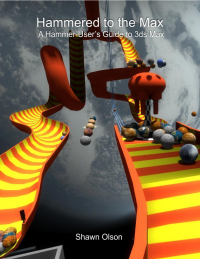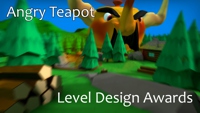Export Body Groups | $bodygroup
Bodygroups are simply different sets of models that can be turned on or off in your main model (for example, you can have a version of a model that has bare arms and another version where the arm has a modeled gauntlet). They are represented in the $bodygroup tag in a QC which Wall Worm will export.
The documentation below reflectes Wall Worm 3.53+.
In Wall Worm, Bodygroups are represented with a Dummy Helper object that has a Wall Worm Bodygroup Custom Attribute Applied to it. That dummy will store information about what models are used in the bodygroup. Each model in a bodygroup should be a WWMT Helper.
Multi-Use Bodygroup Models
You can now reuse a model in multiple bodygroups. To do this, use the Bodygroup UI found in the menu Wall Worm > Wall Worm Model Tools > Body Groups.
Quick Assignment
The fastest way to assign models to a bodygroup is to assign multiple objects at once.
- Create a WWMT Helper for your main model (via Wall Worm > Wall Worm Model Tools > Wall Worm Model Tools).
- Select all the meshes that represent separate submodels in the bodygroup.
- Open the Bodygroups floater by clicking Wall Worm > Wall Worm Model Tools > Bodygroups.
- Click Create BG From Selection and Prompt.
- A query box appears that asks "Create WWMT Helpers for non-WWMT Helpers in Selection?". Click Yes.
- After the function creates new WWMT Helpers and a Bodygroup Dummy, there is a rubber-band between the bodygroup helper and your cursor that is waiting for you to assign the bodygroup to a WWMT Helper by clicking it.
- Click on the original WWMT Helper representing the main model.
What this process did was create a WWMT Helper for each selected object, assign those WWMT Helpers to the Bodygroup Dummy and then assigned the bodygroup to the main model. Now exporting the main model will also include and export all the bodygroups.
Hints
- Turn off staticprop on the main wwmt helper. If you have staticprop turned on, the necessary bones for proper setup will be excluded in the export.
- Each WWMT Helper in a bodygroup must include the bones from the main WWMT Helper's bones/nodes (which includes the root mesh itself). If the meshes do not have Skin modifiers to automatically detect the bones, you can manually include them in the submodel's WWMT Helpers by manually adding them to the Bones list in the modify tab of that WWMT Helper--or to set them all at once by selecting the bodygroup, opening the modify tab and clicking the button labeled Send Parent Bones to All.
You can see what Bodygroups are included in any model by selecting a WWMT Helper and scrolling to the Models, Attachments and Bones rollout in the modify tab. There you will find options for the bodygroups, including making new bodygroups, removing current bodygroups and selecting the bodygroup helpers.
Manual Assignment
- Create a Dummy Object
- Select the Bodygroup dummy.
- Open the Bodygroups floater by clicking Wall Worm > Wall Worm Model Tools > Bodygroups.
- Click Add BG Properties to Dummy.
- Click the Set Current Bodygroup Selection button. This sets the current bodygroups that the functions in the UI will work on.
- Now select any WWMT helper(s) for the models you wish to add to the bodygroup(s).
- Click Assign Selected WWMT to Current Bodygroups.
- Now you must assign this Bodygroup Helper to the main WWMT Model. Select the Bodygroup Helper and click Assign Selected BG to WWMT and pick the master model.
- To remove a model assigned this way, follow the steps outlined above but instead of clicking the Assign button, click the Remove button.
- Note that the multi-use bodygroup function previsouly worked in tandem with the single-use linking method above. In WW 2.9+, the legacy method is no longer used by default.
Customizing the Bodygroups
There are some settings that you can use to control the bodygroup outputs.
Use a Blank Submodel: This setting is now included in the bodygroup helper. To turn this on, select a bodygroup helper, open the Modify Tab and check the Include BLANK setting. If you do not want WWMT to use a blank model, uncheck this option. Available in WW 2.9+.
Blank Index: By default the blank submodel is the first submodel in a bodygroup. To change its position, select the Bodygroup Helper and change the Blank Index value in the modify tab Available in WW 3.53+.
Use Only Bodygroups (no $body): If you do not want the model to include the reference mesh in the $body, then check the Skip $body setting in the WWMT Helper (this setting is only available in the Modify Tab. Available in WW 2.9+.
Bodygroup Skins
As of WWMT 1.89, your bodygroup skins will also export with your main model. To use this, simply generate skins for the bodygroups as you would for standalone models.
- Using WWMT
Articles on using the Wall Worm Model Tools.
- Related Topics





